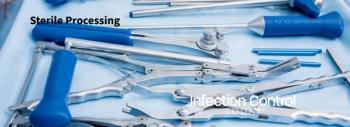
Better Hand Hygiene at Airports Could Greatly Limit COVID-19 Spread
About 20% of passengers in an airport have clean hands. If that increases to 30%, a potential infectious disease would have a worldwide impact that is about 24% smaller.
Increasing hand hygiene at airports could inhibit potential pandemics by 24% to 69%. Even increasing hand hygiene at just the 10 busiest airports globally would reduce the spread of an infectious disease such as the novel coronavirus COVID-19 by 37%, according to a
· London Heathrow
· Los Angeles International
· John F. Kennedy International
· Paris-Charles de Gaulle
· Dubai International
· Frankfurt
· Hong Kong International
· Beijing Capital International
· San Francisco International
· Amsterdam Schiphol
However, total traffic alone cannot predict how a disease would spread, according to investigators with the Massachusetts Institute of Technology (MIT) and the University of Cypress. Take the Narita International Airport in Japan, and Honolulu International Airport. They rank 46 and 117 in total traffic respectively. Yet, they contribute significantly to the expansion of an outbreak, ranking 7 and 30 respectively, according to the measurement the investigators use called total square displacement (TSD). Those 2 airports share 3 important characteristics: They have direct connections to the world’s meg-hub airports, they have long range in- and out-bound international flights, and they are located at “geographically conjunctive points between the East and the West,” according to the study.
Investigators used data from the Official Airline Guide about all the trips (more than 1.9 million) that were booked in September 2017. They estimate that at any given time, about 20% of passengers in an airport have clean hands. They then estimated the rate of disease progression if the number of people with clean hands at airports stood at 30%, 50%, and 60%. If the cleanliness of individuals in the airports increased from 20% to 30%, “a potential infectious disease would have a worldwide impact that is about 24% smaller compared to the impact that the same disease would have with the 20% level of hand cleanliness,” the study states. Raise the level of hand cleanliness to 60%, and there’d be a 69% reduction in the potential of spreading disease.
Both the US Centers for Disease Control and Prevention and the World Health Organization consider proper hand hygiene to be the most effective and least costly way to limit disease spread. Proper hand hygiene includes:
· Wetting hands with clean, running water (warm or cold), turning off the tap, and applying soap.
· Lathering hands by rubbing them together with the soap.
· Scrubbing hands for at least 20 seconds.
· Rinsing hands well under clean, running water.
How many times healthy individuals wash their hands matters. To become infected, someone needs to touch a contaminated surface or come into direct contact with a contaminated person. No matter how soon after a hand washing this contact occurs, the healthy person will again get bacteria on the hands. If the person washes their hands right away, there’s a good possibility that they’ll remove the bacteria.
“Airports, and airplanes, are highly infectious because they are close, confined areas with large, mobile populations,” says Christos Nicolaides, PhD, the study’s lead author in a
Highly contaminated surfaces in airports that are frequently touched by travelers, include self-service check-in screens, door handles, tray tables, seats, gate bench armrests, and even water fountain buttons.
Unfortunately, as the study points out, public spaces don’t usually lend themselves to hand hygiene, being usually limited to sinks in bathrooms. Investigators note that some companies-such as Airbus and Boeing-are exploring new technology to facilitate hand hygiene. Airbus is looking at innovative antimicrobial technology that would eliminate viruses and pathogens from aircraft surfaces. Boeing is exploring self-sanitizing bathrooms that would use ultraviolet light to kill 99.99% of pathogens.
“An important question is how such smart hand-washing technologies will be adopted by the general public, and what incentives can promote hand-washing behavioral changes,” the study states. It concludes that “there is certainly a need for rigorous and carefully designed field experiments on a large population scale, to identify and measure the causal effect of digital nudges, incentives, and peer influence on public hand-washing engagement of air travelers as well as the mechanisms of health-enhancing human behavior change.”
Newsletter
Stay prepared and protected with Infection Control Today's newsletter, delivering essential updates, best practices, and expert insights for infection preventionists.





